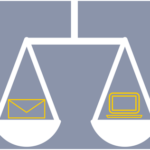July 9, 2015: When you open your mailbox at home, which mail pieces do you choose to read? The ones that are the most colorful? Those that are personally addressed to you? Those that target your individual preferences? If you answered yes to any of the above, you are not alone. Statistics show that 67% of all consumers prefer mail that’s tailored — or personalized — to them in any way, shape or form. In fact, many of today’s most effective advertising campaigns use personalized direct mail in order to reach consumers and prospects.
But what many people do not understand, is why. What makes personalized mail so attractive? Why does it increase response rates? And most importantly, why is it so powerful? These are all important questions, and their single answer is this: personalization creates relationships.
The art of personalization is all about making consumers feel as if you are paying attention to them. It’s about making an emotional connection with them and convincing them that you are there to provide for their specific needs and wants. For example, by simply including the recipient’s name in each piece you send out, you you’ll give consumers the impression that you are addressing them directly, as human beings, not mere entries in a database.
By making several small tweaks to your mailing piece, you can build this kind of powerful connection. You can also augment its impact by including an incentive such as a voucher or discount. Doing this things will increase the chance of the recipient responding. Once a solid connection is built between a marketer and a consumer, the level of engagement between the two parties naturally increases, and with that increase comes a greater likelihood that you as a marketer will make a sale. And in the end, sales are what it’s all about!
Personalization strategies and tactics
Segmentation: Before mailing out a personalized mail piece, take steps to thoroughly understand the segment(s) you’re targeting. This can be done in several ways, the most common method being to find similarities between different segments through analytics and research (qualitative and/or quantitative) to get an idea of what their interests are, their pain points, location within the buying cycle, etc. Once those are determined, the mail can then be personalized accordingly.
Simplify the decision process: When sending out mail personalized mail, make it as easy as possible for the consumer to decide whether or not to respond. Remember that the longer your recipients take to do so, the less chance you have of getting a reply. One way to encourage a decision is by providing the consumer with information that makes a quick decision easy. For example, let’s assume that Sirius XM Radio is sending out renewal letters to existing customers. While some customers listen to satellite radio in their homes, others listen in their vehicles, and the information required for a vehicle-based renewal includes the vehicle’s make, model, VIN number. Most people don’t have this information memorized or written down in a convenient place; furthermore, the hassle of searching for this information might cause them to re-think or postpone their renewal decision. Why not provide this information in the mail piece itself? This way, the customer can pick up the phone, glance at your piece, and complete the transaction. By doing something like this, you are more likely to increase your response rate.
Use your own data: If you’re going to create a personalized piece of mail, fully leverage what you already know about your recipient. Data concerning recipients’ historical purchase history, response to other offers, interaction with your digital properties, etc., can be hugely valuable.
Make use of personalized URLs: Test studies have shown that making use of URLs specifically tailored to the recipient can be very powerful. When people see their name included as part of a URL, they naturally become curious as to what is on the page that has referenced them. When using personalized URLs in direct mail, it’s crucial to emphasize their importance. After all, every little bit helps when attempting to motivate the individual to follow the link. When used properly, personalized URL’s can contribute to a significant rise in response rate.
Research and planning are key to the personalization process
Personalization has been proven to enhance the performance of direct mailing campaigns, but its success really depends on whether or not it’s used correctly. Personalization requires research and careful planning. Ask yourself this, what can I send this person that will motivate him/her to respond? What will make the process simple?
If you can develop appropriate answers to these questions, you will be well on your way to developing an effective personalized mail campaign. There’s no better way to boost sales than by providing consumers with a real reason to purchase what you have to offer them.

![By Damzow [CC BY-SA 3.0 (http://creativecommons.org/licenses/by-sa/3.0)], via Wikimedia Commons](https://www.diditdm.com/wp-content/uploads/2015/03/MailBoxes138-1024x675.jpg)
![By Damzow [CC BY-SA 3.0 (http://creativecommons.org/licenses/by-sa/3.0)], via Wikimedia Commons](https://www.diditdm.com/wp-content/uploads/2015/03/MailBoxes138.jpg)









![By Photograph: Frank C. Müller, Baden-Baden (Own work) [CC BY-SA 2.5 (http://creativecommons.org/licenses/by-sa/2.5)], via Wikimedia Commons](https://www.diditdm.com/wp-content/uploads/2015/08/opening-an-envelope-150x150.jpg)
![By User:Introvert (Own work) [CC BY-SA 2.5 (http://creativecommons.org/licenses/by-sa/2.5)], via Wikimedia Commons](https://www.diditdm.com/wp-content/uploads/2015/10/1024px-Sparkling-snow.sierra-150x150.jpg)